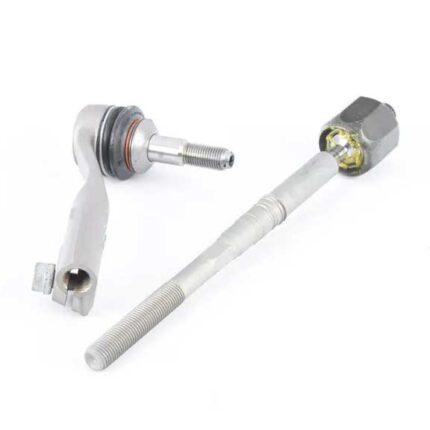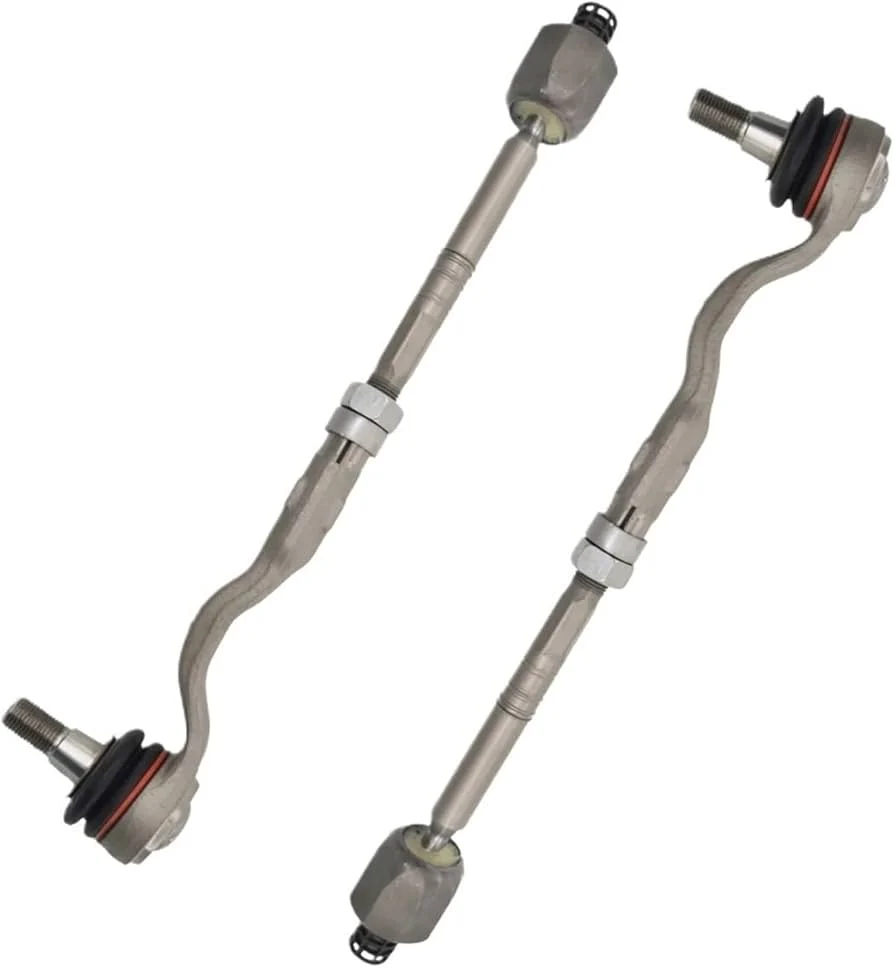-13%
Get BMW F26 X4 xDrive35i N55 3.0L Tie Rod Assembly 32106787472 in Kenya
The tie rod assembly is a critical part of a vehicle’s steering system. It plays a pivotal role in transmitting steering inputs from the driver to the wheels, ensuring accurate directional control and stability. Whether you are a driver, mechanic, or automotive enthusiast, understanding the tie rod assembly’s structure, function, and maintenance is vital for optimal vehicle performance and safety. This guide delves into the details of the tie rod assembly, its components, operation, common issues, and tips for maintenance.
What is a Tie Rod Assembly?
A tie rod assembly is a mechanical linkage that connects the steering rack or gearbox to the vehicle’s steering knuckle, transmitting steering force to the wheels. It ensures the wheels turn in response to the driver’s input on the steering wheel. The assembly typically includes the inner and outer tie rods, along with components like ball joints and rubber boots.
The name “tie rod assembly” reflects its design, which ties together the steering mechanism and the wheels, creating a seamless connection for precise handling and control.
Components of a Tie Rod Assembly
- Inner Tie Rod
- Connected directly to the steering rack or gearbox. It transmits the steering motion and force to the outer tie rod.
- Outer Tie Rod
- Connected to the steering knuckle and the inner tie rod. It directly influences wheel movement.
- Ball Joint
- Located at the end of the outer tie rod, it allows rotational and pivoting motion, facilitating smooth wheel movement and suspension travel.
- Rubber Boot (Tie Rod End Boot)
- A protective cover that seals the ball joint, preventing dirt, debris, and moisture from causing damage.
- Adjusting Sleeve (in Some Designs)
- A threaded connector that allows alignment adjustments by altering the tie rod’s length.
How the Tie Rod Assembly Works
The tie rod assembly operates as a link between the steering mechanism and the wheels. Here’s how it functions:
- Steering Input
- When the driver turns the steering wheel, the motion is transmitted through the steering column to the steering rack or gearbox.
- Force Transmission
- The inner tie rod, attached to the steering rack, moves in response, pushing or pulling the outer tie rod.
- Wheel Movement
- The outer tie rod, connected to the steering knuckle, translates this movement to the wheels, causing them to turn.
- Suspension Interaction
- The ball joint in the outer tie rod ensures the wheels can pivot and move up and down as the suspension absorbs road imperfections.
Functions of a Tie Rod Assembly
- Steering Control
- Ensures the driver’s steering input is accurately transferred to the wheels for smooth and precise vehicle handling.
- Alignment Maintenance
- Helps maintain the correct alignment of the wheels, ensuring stability and even tire wear.
- Safety Enhancement
- Provides reliable directional control, essential for safe vehicle operation.
- Suspension Coordination
- Works with the suspension system to accommodate road irregularities without compromising steering integrity.
Signs of a Faulty Tie Rod Assembly
A damaged or worn-out tie rod assembly can lead to various issues that compromise safety and performance. Watch out for the following symptoms:
- Loose Steering
- A loose or unresponsive steering wheel indicates excessive play in the tie rod assembly.
- Uneven or Excessive Tire Wear
- Misalignment caused by a faulty tie rod can lead to uneven tire wear patterns.
- Clunking or Knocking Noises
- Worn ball joints or damaged tie rods can produce clunking sounds, especially when turning or driving over bumps.
- Steering Wheel Vibration
- Vibrations felt in the steering wheel, especially at higher speeds, may indicate a worn tie rod assembly.
- Vehicle Pulling to One Side
- A misaligned tie rod can cause the vehicle to drift to one side while driving.
- Difficulty Maintaining Alignment
- A damaged tie rod assembly can make it challenging to keep the wheels aligned.
Common Causes of Tie Rod Assembly Failure
- Wear and Tear
- Continuous use causes natural wear on the ball joints and other moving parts.
- Harsh Road Conditions
- Driving on rough roads, potholes, or curbs can damage or strain the tie rod assembly.
- Corrosion
- Exposure to moisture, salt, and road debris can lead to rust, weakening the tie rod components.
- Improper Maintenance
- Neglecting regular inspections or delaying repairs can exacerbate minor issues.
- Accidents or Impacts
- Collisions or hard impacts can bend or break the tie rod assembly.
Maintenance Tips for a Tie Rod Assembly
- Regular Inspections
- Include the tie rod assembly in routine vehicle inspections to identify early signs of wear or damage.
- Protect the Ball Joints
- Check the condition of the tie rod end boots and replace them if they show signs of cracking or tearing.
- Lubrication
- Ensure ball joints are adequately greased to minimize friction and wear.
- Wheel Alignment
- Have the vehicle’s alignment checked regularly, particularly after replacing the tie rod assembly or suspension components.
- Address Issues Promptly
- Replace damaged or worn tie rod components immediately to prevent further problems and ensure safety.
Replacement of a Tie Rod Assembly
Replacing a tie rod assembly requires expertise and precision. While it’s recommended to consult a professional mechanic, understanding the replacement process is helpful:
- Preparation
- Secure the vehicle on a level surface and ensure the wheels are stable.
- Removal of the Old Assembly
- Detach the tie rod assembly from the steering rack and the steering knuckle. Use a ball joint separator to disconnect the ball joint.
- Installation of the New Assembly
- Install the new inner and outer tie rods, ensuring all connections are secure.
- Alignment
- Perform a professional wheel alignment to restore proper handling and prevent uneven tire wear.
Benefits of a Properly Functioning Tie Rod Assembly
- Improved Handling
- A responsive tie rod assembly ensures precise steering and control.
- Enhanced Safety
- Provides reliable directional stability, reducing the risk of accidents.
- Prolonged Tire Life
- Maintains proper alignment, preventing premature or uneven tire wear.
- Smooth Driving Experience
- Eliminates steering vibrations and ensures a comfortable ride.
- Reduced Repair Costs
- Regular maintenance prevents secondary damage to other suspension or steering components.
Applications of Tie Rod Assemblies
Tie rod assemblies are essential across all types of vehicles, including:
- Passenger cars.
- SUVs and crossovers.
- Trucks and commercial vehicles.
- Off-road and specialty vehicles.
Conclusion
The tie rod assembly is a small but vital part of a vehicle’s steering and suspension system. Its role in transmitting steering input, maintaining alignment, and ensuring stability cannot be overstated. Regular maintenance, timely replacement, and proper alignment checks are essential to keep the tie rod assembly in peak condition. By doing so, drivers can enjoy a safe, comfortable, and controlled driving experience, while minimizing repair costs and prolonging the lifespan of related components.
Follow us on Facebook for more parts.




Reviews
Clear filtersThere are no reviews yet.